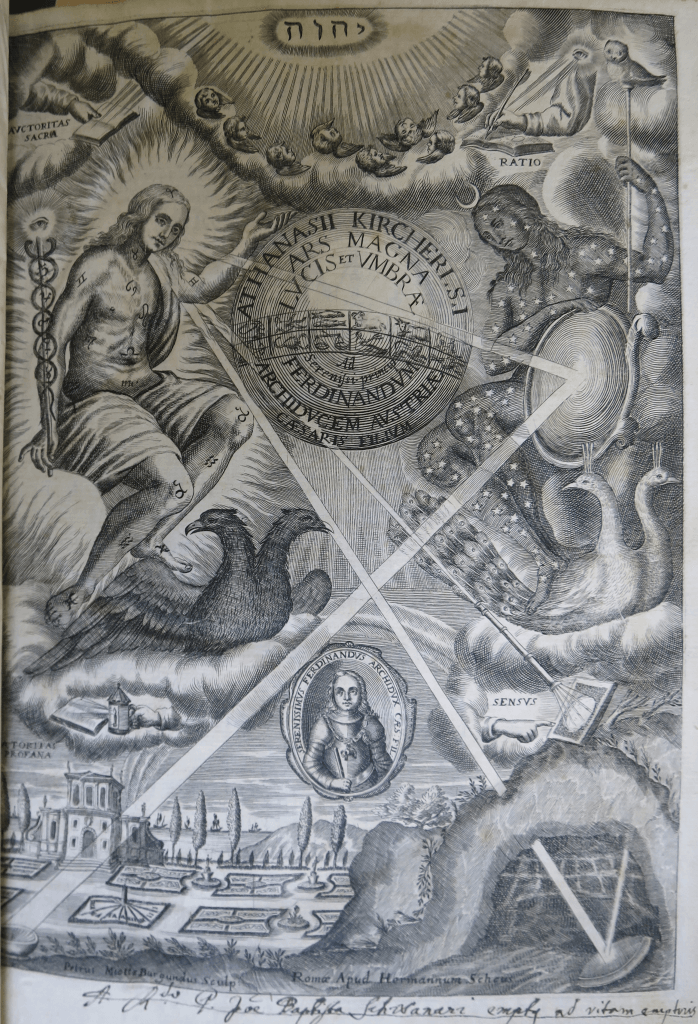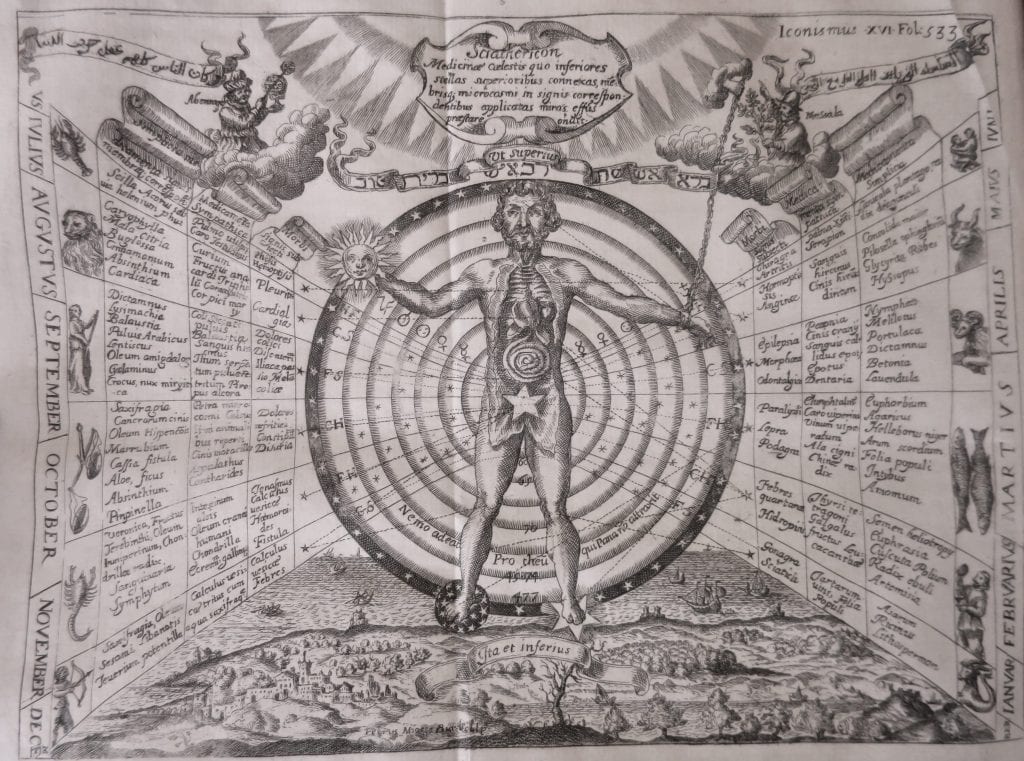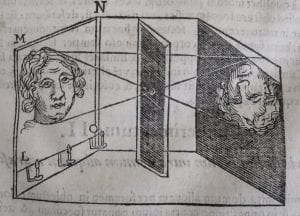New Acquisition: Athanasius Kircher, Ars Magna Lucis et Umbrae, 1646
Special Collections is pleased to announce the acquisition of Ars Magna Lucis et Umbrae (Great Art of Light and Shadow), one of the key scientific works, and possibly the rarest, by the German Jesuit scholar Athanasius Kircher (1602-1680). This acquisition was made possible by the generous donation of the Albertsen family.
Historical Background
A prolific scholar with a thirst for questioning and experimentation, Athanasius Kircher wrote on a wide range of subjects including Egyptology, theology, geology, technology, and medicine. He took a syncretic approach to scientific research, drawing on the mysteries of natural laws and forces as well as directly observable and measurable phenomena. For instance, his treatise on magnetism (Magnes sive de arte magnetica) covered the gravitational pull of the planets’ orbits, but also touched on love and the use of the tarantella as “musical magnetism” that would draw the toxins of a tarantula’s bite out of the human body.[i]
Kircher was a “quintessential polymath, of that soon-to-be-extinct academic species that eschewed specialization and aspired to master the entire panorama of human knowledge.”[ii] His encyclopedic vision and flamboyant philosophy were not appreciated by all in his time, however: in 1643, Descartes, in a letter, described Kircher as “more charlatan than scholar” and refused to read his books.[iii] Although Kircher is now known not to have made any original scientific contributions, several inventions and discoveries are often mistakenly attributed to him—most notably the magic lantern described in Ars Magna Lucis et Umbrae. The magic lantern—an early kind of image projector using transparent images printed on glass, at least one lens, and a light source—was not invented by Kircher, but he did make improvements on it.
The Text
Written in Latin like Kircher’s other works, this folio volume of Ars Magna Lucis et Umbrae is a first edition, published in 1646, and contains two volumes bound in one. The book contains the first description of the camera obscura, treats astronomy and astrology, gnomics, optics, and catoptics. Kircher includes investigations into several other problems that were only tangentially related to optics and imaging technology. For instance, he discusses the design and construction of sundials, whether the “animal light” of fireflies could be harnessed to light houses, and the comparison of light to sound and description of several acoustic instruments he had previously designed. Additionally, the book contains his investigation of microscope technology, which preceded the better-known work of Robert Hooke and Anthony van Leeuwenhoek by roughly two decades.
The book features 38 illustration plates, including several folding plates, as well as several hundred smaller woodcut diagrams appearing in the text. These illustrations include astrological charts, diagrams of the sun and moon (which Kircher called a merely secondary light) as well as diagrams showing the projection of light within a cabinet or a chamber.
Scholars working on early modern science, philosophy, and culture will appreciate Kircher’s originality and range, as well as the sheer beauty of this book. Ars Magna Lucis et Umbrae offers a look into the mind of one of the most unique and imaginative thinkers of the early modern period who has become the subject of renewed scholarly interest within the last few decades. It is essential for scholars generally interested in Kircher’s philosophy and scientific approach as well as in early modern conceptions of optics, light, and imaging technologies. However, this book could also be utilized for its explorations of the workings of other mechanisms such as magnets, musical instruments, the human eye, and timekeeping technology.
—Abigail Johnson, Social Media Student Assistant
REFERENCES:
[i] Rowland, Ingrid D, The ecstatic journey: Athanasius Kircher in Baroque Rome (Chicago: University of Chicago Press, 2000) 12.
[ii] Stolzenberg, Daniel. Egyptian Oedipus: Athanasius Kircher and the Secrets of Antiquity. (Chicago: University of Chicago Press, 2013), 4.
[iii] Ibid.






